#tangonosekku
Explore tagged Tumblr posts
Text

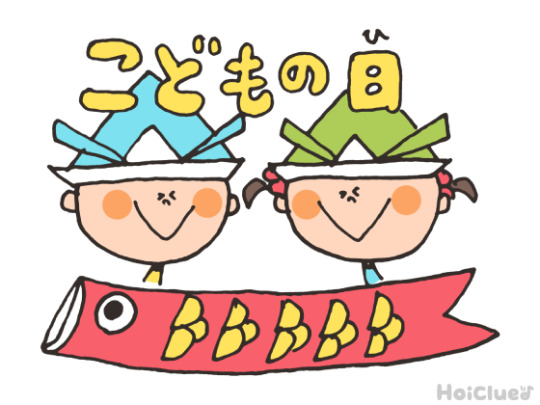
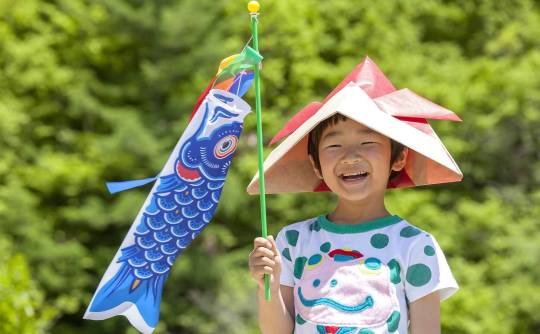

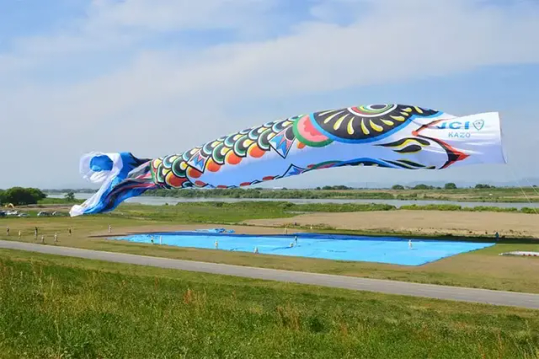
Sean bienvenidos japonsistasarqueológicos, a una nueva entrega cultural en esta ocasión os voy comentar la festividad, del día del niño que se celebra cada 5 de Mayo que se llama Kodomo no Hi y se escribiríaこどもの日 una vez dicho esto pónganse cómodos que empezamos. - ¿Cuándo surgió el día del niño?La festividad, surge en el siglo VIII d.c en lo que respondería al periodo Heian, posiblemente tendría influencia de china al respecto ya que se basó en Tango no Sekku. El Sekku se basa en los puntos de inflexión de las estaciones y se basa en la teoría de los cinco elementos del yin y el yang en China. - La forma tradicional de celebrarlo es ofrecer ofrendas estacionales a los dioses, rezar y comer juntos los productos de segunda mano.En el período Kamakura, en pleno auge de los samurais, se convirtió en un evento importante para orar por el crecimiento y la salud de los niños y la prosperidad de la familia, con adornos como armaduras, cascos, serpentinas de carpa y muñecos festivos. - Ahora a continuación mencionaré algunos dulces de los que se suelen comer el 5 de Mayo: Kashiwa mochi,Chimaki, beko mochi, akumaki , pastel no koi. - Espero que os haya gustado y nos vemos en próximas publicaciones y que pasen un feliz día del niño.
-
今回は、毎年5月5日に行われる「こども��日」というお祭りについてお話しします。「こどもの日」とは、「こどもの日」と書いて「こどもの日」と読みます。 - こどもの日」の起源は、紀元8世紀の平安時代にさかのぼりますが、「端午の節句」が元になっていることから、中国の影響を受けている可能性があります。節句とは、季節の変わり目を表すもので、中国の陰陽五行説に基づくものです。 - 季節のお供え物を神に捧げ、祈り、中古品をみんなで食べるのが伝統的な祝い方です。 武士ブーム真っ只中の鎌倉時代には、甲冑や兜、こいのぼり、祝い人形などを飾り、子供の成長や健康、家族の繁栄を祈る大切な行事となりました。 - 柏餅、ちまき、べこ餅、あくまき、こいのぼりのお菓子です。 - 気に入っていただけたなら幸いです。今後の記事でお会いしましょう。そして、楽しい子供の日をお過ごしください。
-
Welcome to a new cultural delivery in this occasion I am going to comment on the festivity, the day of the child that is celebrated every 5th of May that is called Kodomo no Hi and it would be writtenこどもの日 once said this make yourselves comfortable that we begin. - When did Children's Day come about? The holiday, which dates back to the 8th century AD in what would be the Heian period, was possibly influenced by Chinese in this respect as it was based on Tango no Sekku. Sekku is based on the turning points of the seasons and is based on the five element theory of yin and yang in China. - The traditional way to celebrate it is to offer seasonal offerings to the gods, pray and eat second-hand goods together. In the Kamakura period, at the height of the samurai boom, it became an important event to pray for the growth and health of children and the prosperity of the family, with decorations such as armour, helmets, carp streamers and festive dolls. - Now here are some of the sweets usually eaten on May 5th: Kashiwa mochi, Chimaki, beko mochi, akumaki, no koi cake. - I hope you liked it and see you in future posts and have a happy children's day.
#日本#こどもの日#平安時代#中国#端午の節句#鎌倉時代#佐村河内#柏餅#ちまき#歴史#あくまき#ケーキ#こい#japan#KodomonoHi#Heianperiod#china#Tangonosekku#Kamakuraperiod#samura#Kashiwamochi#Chimaki#history#akumaki#cake#koi#culture#文化
12 notes
·
View notes
Text
#japan
#2025#Akihito#Festa#Giappone#Hinamatsuri#Hirohito#KenpouKinenbi#KodomoNoHi#MidoriNoHi#OogataRenkyuu#OogonShuukan#Ricorrenza#ShouwaNoHi#TangoNoSekku#TennouTanjoubi
0 notes
Photo
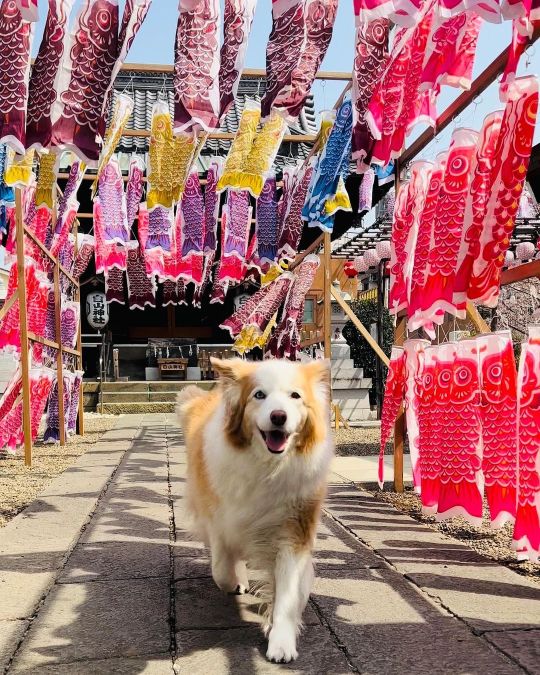
#鯉のぼり #koinobori #子供の日 #childrensday #端午の節句 #tangonosekku #thisisjapan #may5 #carp #lady #bordercollie (at Tokyo, Japan) https://www.instagram.com/p/CdLX5cSv72s/?igshid=NGJjMDIxMWI=
2 notes
·
View notes
Photo

5月5日はこどもの日です🎏 May 5 is Kodomobo no Hi in Japan🇯🇵 You can also say 端午の節句(tango no sekku)! Do you want to learn more? Please watch full video on our YouTube channel! → ”PuniPuniJapan “ Or you can check out our blog : http://www.punipunijapan.com/kodomo-no-hi-golden-week/ Do you want to learn more about Japanese culture and Japanese language? Learn Japanese with our friendly professional Japanese teachers\(◕ω◕)/☆ You can take FREE trial lesson now → http://kakehashijapan.com ☆.。.:*・°☆.。.:*・°☆.。.:*・° JLPT N3 preparation course! Only $5/lesson! : http://www.punipunijapan.com/n3/ JLPT N4 preparation course ! Only $5/lesson! → http://www.punipunijapan.com/n4/ JLPT N5 preparation course! Only $5/lesson! : http://www.punipunijapan.com/five-dollar-jlpt-class/ #こどもの日 #koinobori #こいのぼり #端午の節句 #Tangonosekku #kodomonohi #kodomo #japaneseculture #japanculture #Japanesevocabulary #japanesewords #JET #ALT #JETprogram #日本語勉強中 #日本語勉強 #nihongo #Japaneselearner #japanese #Japan #japaneselanguage #japaneselessons #japaneselesson #learnjapanese #japaneseteacher #Japanesetutor #sensei #japaneseclass #jlpt #n5 #n4 #n3 #日本語 #🇯🇵 https://www.instagram.com/p/BxFU-OFHUpq/?utm_source=ig_tumblr_share&igshid=1hz29s3ngqyoo
#こどもの日#koinobori#こいのぼり#端午の節句#tangonosekku#kodomonohi#kodomo#japaneseculture#japanculture#japanesevocabulary#japanesewords#jet#alt#jetprogram#日本語勉強中#日本語勉強#nihongo#japaneselearner#japanese#japan#japaneselanguage#japaneselessons#japaneselesson#learnjapanese#japaneseteacher#japanesetutor#sensei#japaneseclass#jlpt#n5
18 notes
·
View notes
Photo

🥳 #May5 #CincoDeMayo 🇲🇽 is also known 🇯🇵 as #KodomonoHi子供の日 🎏 #TangonoSekku 端午の節句 ❤️ celebrating my #SONshine ☀️ https://www.instagram.com/p/CdNMakVui6H/?igshid=NGJjMDIxMWI=
0 notes
Photo

Essential Japanese Seasonal Decorations - Summer
Seasonality: Early Summer/ May
Japanese Name: Kodomo no Hi/ Tango no Sekku/ Shobu no Sekku/ Ayame no Hi/ Koinobori/ Yaguruma/ Hiryu Fukinagashi
English Name: Children’s Day/ Beginning Horse Festival/ Iris Festival/ Day of the Iris/ Carp Streamers/ Arrow-spoked Wheel/ Flying Dragon Streamer
Children's Day (こどもの日, or Kodomo no Hi) is a Japanese national holiday which takes place annually on May 5, the fifth day of the fifth month, and is the final celebration in Golden Week. It is a day set aside to respect children's personalities and to celebrate their happiness. It was designated a national holiday by the Japanese government in 1948. It has been a day of celebration in Japan since ancient times.
Tango no Sekku (端午の節句) is one the five annual ceremonies that were traditionally held at the Japanese imperial court called Gosekku . It is the Japanese version of Double Fifth and was celebrated on the 5th day of the 5th moon in the lunar calendar or Chinese calendar. After Japan switched to the Gregorian calendar, the date was moved to May 5. Tan means "beginning" and go means "Horse", referring to the Chinese zodiac name for the fifth lunar month. Sekku means a seasonal festival. It marks the beginning of summer or the rainy season.
Shobu no Sekku (菖蒲の節句), also known as Ayame no Hi (菖蒲の節句), the festival of the irises (in the old Japanese calendar, the day would fall closer to the summer solstice than it does in the modern calendar). The iris flower or flag has long been used in purifying rituals on this day, by farmers, townspeople, and courtiers. At least as far back as the 12th century this was a day for gathering iris leaves and flowers for use in the bath, as an addition to food and drink, and in decorations on the roofs of houses and shops. The iris bath is still popular on this day in Japan. During the 12th or 13th century the word "shobu" came to be associated with its homonym meaning "military spirit", and people started celebrating by decorating paper samurai helmets with irises. Thus it became a day for boys, as the third day of the third month was a special day for girls, Hina matsuri. In the 18th and 19th centuries, boys would stage battles using iris leaves as swords. One military tradition that has evolved and persisted, though, is the setting up of a special display celebrating warrior values and Japanese heroes. It may have begun with a custom of making helmets out of iris leaves, which evolved into the crafting of beautiful lacquered display helmets for the day, along with painted banners and displays of real weapons.
Koinobori (鯉のぼり), meaning "carp streamer" in Japanese, are carp-shaped wind socks traditionally flown in Japan to celebrate Tango no sekku, a traditional calendrical event which is now designated a national holiday; Children's Day (Kodomo no Hi, 子供の日). A typical koinobori set consists of, from the top of the pole down, a:
Pair of arrow-spoked wheels (矢車 yaguruma) with a ball-shaped spinning vane
Flying-dragon streamer (飛龍吹流し hiryū fukinagashi) that looks like a windsock.
The number and meaning of the carp socks or koinobori that fly beneath the streamer has changed over time.
Traditionally, the set would contain a black koinobori representing the father, followed by a smaller, red koinobori representing his eldest son. If more boys were in the household, an additional blue, green and then, depending on the region, either purple or orange koinobori were added.
After the government's decree that converted Boy's Day (Tango no Sekku) into the present Children's Day (Kodomo no Hi), the holiday came to celebrate the happiness of both boys and girls. As a result, the red koinobori came to represent the mother of the family and it is not uncommon for the color to be varied as pink. Similarly, the other colors and sizes of carp came to represent all the family's children, both sons and daughters.
At present, the koinobori are commonly flown above the roofs of houses with children, with the biggest (black) koinobori for the father, next biggest (red or pink) for the mother, and an additional, smaller carp of a different color for each child in decreasing order by age.
(Text Source 1)(Text Source 2)(Text Source 3)(Text Source 4)
DISCLAIMER: This is not a sponsored post from the source website nor am I selling these items through this tumblr account. This post is the result of my finding this item to adorable and/or beautiful to not include on this account. Thank you for your understanding.
#kimono#kodomonohi#kodomo no hi#kodomo#hi#kodomonohidecorations#tangonosekku#tango no sekku#tango#sekku#tangonosekkudecorations#shobunosekku#shobu no sekku#shobu#shobunosekkudecorations#ayamenohi#ayame no hi#ayame#ayamenohidecorations#earlysummer#earlysummerdecorations#maydecorations#seasonalphenomena#seasonalcelebrations#seasonaldecorations#seasonal#phenomena#decorations#celebrations#koinobori
24 notes
·
View notes
Photo
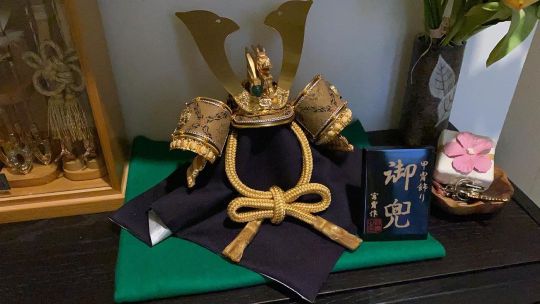
It’s that time of the year again. #childernsday #kabutohelmet #子供の日 #tangonosekku #端午の節句 #maythe4thbewithyou (at Dandenong, Victoria) https://www.instagram.com/p/COc0_TDDnfH/?igshid=15pmdswknz9en
0 notes
Photo

#sumie #sketch for a Project #elmo #kabuto #tangonosekku #kodomonohi #festa di bimbi #japan #giappone #origami #usanza #墨絵 #スケッチ #5月 #maggio #皐月 #かぶと #おりがみ #midoriyamane #midoriyamanemangaka https://www.instagram.com/p/Bw0RXNShRaK/?utm_source=ig_tumblr_share&igshid=1xd4gvijmc5nr
#sumie#sketch#elmo#kabuto#tangonosekku#kodomonohi#festa#japan#giappone#origami#usanza#墨絵#スケッチ#5月#maggio#皐月#かぶと#おりがみ#midoriyamane#midoriyamanemangaka
0 notes
Photo

“Tango-no-Sekku” We wish the healthy growth of our boy✨
#tangonosekku #boysday #iris #kabuto #koinobori #noboriryu #deanflowers #genemon (Oita, Oita)
1 note
·
View note
Photo
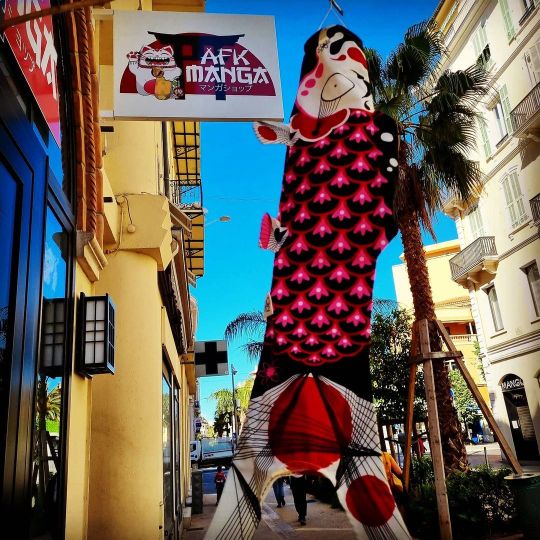
🎏 『 Kodomo No Hi 』 🎏 Hello à tous ! . 🎏 . Aujourd'hui 5 Mai c'est le "Kodomo No Hi" au Japon, la fête des Carpes et des enfants, particulièrement les garçons. . 🎏 . Appelé aussi sous le nom "Tango No Sekku", cette journée est célébrée avec le symbole du "Koi Nobori" (banderole de carpe) signifiant courage et persévérance. Vous pouvez les accrocher sur le balcon, dans le jardin, en décoration chez vous ou au bout d'une branche flottant dans la brise du printemps. . 🎏 . Envie de faire plaisir aujourd'hui, ces Carpes Koï, "Koi Nobori" sont disponible dans votre Librairie ⛩ @afkmanga ⛩ en différentes tailles. . 🎏 . @madamemo @demizuposuka - illustration. . 🎏 . #afkmanga #manga #anime #librairie #librairiemanga #mangastagram #mangaaddict #mangabook #mangalover #instamanga #instalibrary #japan #shonen #shojo #seinen #josei #WeLoveManga #carpe #carpekoi #koinobori #kodomonohi #tangonosekku #demizuposuka #thepromisedneverland #kodomo #🎏 (à AFK Manga) https://www.instagram.com/p/COfBfbTr3Fa/?igshid=n3l4gi3vhsii
#afkmanga#manga#anime#librairie#librairiemanga#mangastagram#mangaaddict#mangabook#mangalover#instamanga#instalibrary#japan#shonen#shojo#seinen#josei#welovemanga#carpe#carpekoi#koinobori#kodomonohi#tangonosekku#demizuposuka#thepromisedneverland#kodomo#🎏
1 note
·
View note
Text
Golden Week 2024
#japan
Nel periodo tra la fine di aprile e l’inizio di maggio, hanno luogo alcune festività. In Italia sono due: il 25 aprile e il primo maggio. In Giappone invece sono il doppio, quindi quattro e questo periodo è noto come Golden Week. Va dal 29 aprile al 5 continua Ads Golden Week 20241 May 2024 安24 April 2024 Ansei17 April 2024
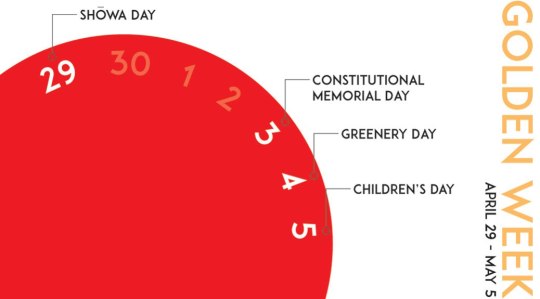
View On WordPress
#2024#Akihito#Festa#Giappone#Hinamatsuri#Hirohito#KenpouKinenbi#KodomoNoHi#MidoriNoHi#OogataRenkyuu#OogonShuukan#Ricorrenza#ShouwaNoHi#TangoNoSekku#TennouTanjoubi
1 note
·
View note
Photo

#maythe4thbewithyou #maythe5thbewithkids #フォースと共にあらんことを #darthvader #samurai #starwarsday #starwars #tangonosekku #gogatsuningyo #boysfestival #tokyo #japan
#gogatsuningyo#maythe4thbewithyou#darthvader#tangonosekku#japan#starwars#samurai#starwarsday#maythe5thbewithkids#フォースと共にあらん��とを#boysfestival#tokyo
0 notes
Video
instagram
5月5日はこどもの日です🎏 May 5 is Kodomobo no Hi in Japan🇯🇵 You can also say 端午の節句(tango no sekku)! Do you want to learn more? Please watch full video on our YouTube channel! → ”PuniPuniJapan “ Or you can check out our blog : http://www.punipunijapan.com/kodomo-no-hi-golden-week/ Do you want to learn more about Japanese culture and Japanese language? Learn Japanese with our friendly professional Japanese teachers\(◕ω◕)/☆ You can take FREE trial lesson now → http://kakehashijapan.com ☆.。.:*・°☆.。.:*・°☆.。.:*・° JLPT N3 preparation course! Only $5/lesson! : http://www.punipunijapan.com/n3/ JLPT N4 preparation course ! Only $5/lesson! → http://www.punipunijapan.com/n4/ JLPT N5 preparation course! Only $5/lesson! : http://www.punipunijapan.com/five-dollar-jlpt-class/ #こどもの日 #koinobori #こいのぼり #端午の節句 #Tangonosekku #kodomonohi #kodomo #japaneseculture #japanculture #Japanesevocabulary #japanesewords #JET #ALT #JETprogram #日本語勉強中 #日本語勉強 #nihongo #Japaneselearner #japanese #Japan #japaneselanguage #japaneselessons #japaneselesson #learnjapanese #japaneseteacher #Japanesetutor #sensei #japaneseclass #jlpt #n5 #n4 #n3 #日本語 #🇯🇵 https://www.instagram.com/p/BxEZSA2HJDK/?utm_source=ig_tumblr_share&igshid=1g12l0bgi79k0
#こどもの日#koinobori#こいのぼり#端午の節句#tangonosekku#kodomonohi#kodomo#japaneseculture#japanculture#japanesevocabulary#japanesewords#jet#alt#jetprogram#日本語勉強中#日本語勉強#nihongo#japaneselearner#japanese#japan#japaneselanguage#japaneselessons#japaneselesson#learnjapanese#japaneseteacher#japanesetutor#sensei#japaneseclass#jlpt#n5
13 notes
·
View notes
Photo

Summer is arriving! May 5th is Tango-no-Seki or Boy’s Day. It’s a Japanese PH to pray for the healthy growth of the boys. Families with boy(s) hang koinobori (carp streamers) outside of the house. Carp represents strong and courage because the Chinese folklore was said that they need to climbed up the waterfall and became dragons. Kashiwa-Mochi is usually eaten on that day. Kashiwa is an oak leaf wrapping mochi.
0 notes
Photo

Essential Japanese Seasonal Decorations - Summer
Seasonality: Early Summer/ May
Japanese Name: Kodomo no Hi/ Tango no Sekku/ Ayame no Hi/ Kabuto/ Tousei-gusoku
English Name: Children’s Day/ Beginning Horse Festival/ Day of the Iris/ Samurai Helmet/ Modern Samurai Armor
Children's Day (こどもの日, or Kodomo no Hi) is a Japanese national holiday which takes place annually on May 5, the fifth day of the fifth month, and is the final celebration in Golden Week. It is a day set aside to respect children's personalities and to celebrate their happiness. It was designated a national holiday by the Japanese government in 1948. It has been a day of celebration in Japan since ancient times.
Tango no Sekku (端午の節句) is one the five annual ceremonies that were traditionally held at the Japanese imperial court called Gosekku . It is the Japanese version of Double Fifth and was celebrated on the 5th day of the 5th moon in the lunar calendar or Chinese calendar. After Japan switched to the Gregorian calendar, the date was moved to May 5. Tan means "beginning" and go means "Horse", referring to the Chinese zodiac name for the fifth lunar month. Sekku means a seasonal festival. It marks the beginning of summer or the rainy season.
Shobu no Sekku (菖蒲の節句), also known as Ayame no Hi (菖蒲の節句), the festival of the irises (in the old Japanese calendar, the day would fall closer to the summer solstice than it does in the modern calendar). The iris flower or flag has long been used in purifying rituals on this day, by farmers, townspeople, and courtiers. At least as far back as the 12th century this was a day for gathering iris leaves and flowers for use in the bath, as an addition to food and drink, and in decorations on the roofs of houses and shops. The iris bath is still popular on this day in Japan. During the 12th or 13th century the word "shobu" came to be associated with its homonym meaning "military spirit", and people started celebrating by decorating paper samurai helmets with irises. Thus it became a day for boys, as the third day of the third month was a special day for girls, Hina matsuri. In the 18th and 19th centuries, boys would stage battles using iris leaves as swords. One military tradition that has evolved and persisted, though, is the setting up of a special display celebrating warrior values and Japanese heroes. It may have begun with a custom of making helmets out of iris leaves, which evolved into the crafting of beautiful lacquered display helmets for the day, along with painted banners and displays of real weapons.
Kabuto (兜, 冑) is a type of helmet first used by ancient Japanese warriors, and in later periods, they became an important part of the traditional Japanese armour worn by the samurai class and their retainers in feudal Japan. Families often display a traditional Japanese military helmet, kabuto, due to their tradition as symbols of strength and vitality.
Tousei-gusoku (当世 具足),or “modern” Japanese armor, is made from iron plates (ita-mono) instead of individual scales (kozane). Tosei-gusoku became prominent starting in the 1500s due to the advent of firearms, new fighting tactics and the need for additional protection. When the days of war and battles began in Japan around 14th century, improved skilled craftsmen began to make miniature helmets and armor for Samurai warriors to display them in their houses and pray for war fortune and prosperity. By around Edo Period (1603-1868), it seems to have become a trend for Samurai families to display gorgeous miniature armor sets inside houses along with Samurai-related miniature accessories, such as bows and arrows, swords, or labarums with a family crest designed on it.
(Text Source 1)(Text Source 2)(Text Source 3)(Text Source 4)(Text Source 5)
DISCLAIMER: This is not a sponsored post from the source website nor am I selling these items through this tumblr account. This post is the result of my finding this item to adorable and/or beautiful to not include on this account. Thank you for your understanding.
#kimono#kodomonohi#kodomo no hi#kodomo#hi#kodomonohidecorations#tangonosekku#tango no sekku#tango#sekku#tangonosekkudecorations#shobunosekku#shobu no sekku#shobu#shobunosekkudecorations#ayamenohi#ayame no hi#ayame#ayamenohidecorations#earlysummer#earlysummerdecorations#maydecorations#seasonalphenomena#seasonalcelebrations#seasonaldecorations#seasonal#celebrations#decorations#phenomena#tousei-gusoku
10 notes
·
View notes
Photo

もうすぐ#端午の節句 #椿大神社 #山本行恭宮司 の #貴重なお話 #六芸 #六藝 #四書五経 #陰陽 #静と動 #神道氣学 #新陳代謝 #乾坤 #動画 は #遠江国 #一の宮 #一の宮巡り #小國神社 #島嶼見聞録 #yukikokigoshi #hanamaruxyz #こいのぼり #鯉のぼり #koinobori #festadelbambino #giappone #japan #tangonosekku #kodomonohi #こどもの日 #tempioscintoista #jinja #shrine
#tangonosekku#hanamaruxyz#陰陽#乾坤#こどもの日#静と動#こいのぼり#kodomonohi#四書五経#椿大神社#動画#koinobori#島嶼見聞録#giappone#jinja#遠江国#六芸#貴重なお話#鯉のぼり#山本行恭宮司#神道氣学#festadelbambino#六藝#端午の節句#shrine#新陳代謝#japan#一の宮#yukikokigoshi#一の宮巡り
0 notes